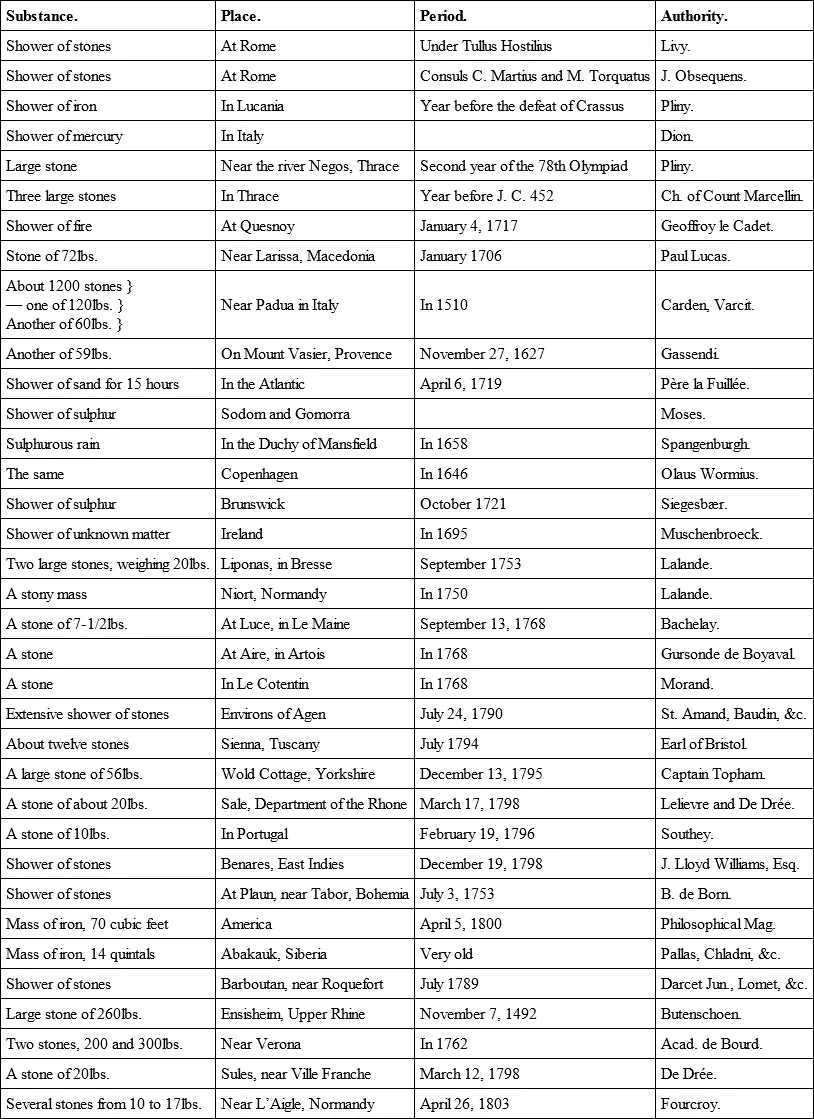Various - Harper's New Monthly Magazine, Volume 1, No. 4, September, 1850
Здесь есть возможность читать онлайн «Various - Harper's New Monthly Magazine, Volume 1, No. 4, September, 1850» — ознакомительный отрывок электронной книги совершенно бесплатно, а после прочтения отрывка купить полную версию. В некоторых случаях можно слушать аудио, скачать через торрент в формате fb2 и присутствует краткое содержание. Издательство: Иностранный паблик, Жанр: periodic, foreign_edu, на английском языке. Описание произведения, (предисловие) а так же отзывы посетителей доступны на портале библиотеки ЛибКат.
- Название:Harper's New Monthly Magazine, Volume 1, No. 4, September, 1850
- Автор:
- Издательство:Иностранный паблик
- Жанр:
- Год:неизвестен
- ISBN:нет данных
- Рейтинг книги:5 / 5. Голосов: 1
-
Избранное:Добавить в избранное
- Отзывы:
-
Ваша оценка:
- 100
- 1
- 2
- 3
- 4
- 5
Harper's New Monthly Magazine, Volume 1, No. 4, September, 1850: краткое содержание, описание и аннотация
Предлагаем к чтению аннотацию, описание, краткое содержание или предисловие (зависит от того, что написал сам автор книги «Harper's New Monthly Magazine, Volume 1, No. 4, September, 1850»). Если вы не нашли необходимую информацию о книге — напишите в комментариях, мы постараемся отыскать её.
Harper's New Monthly Magazine, Volume 1, No. 4, September, 1850 — читать онлайн ознакомительный отрывок
Ниже представлен текст книги, разбитый по страницам. Система сохранения места последней прочитанной страницы, позволяет с удобством читать онлайн бесплатно книгу «Harper's New Monthly Magazine, Volume 1, No. 4, September, 1850», без необходимости каждый раз заново искать на чём Вы остановились. Поставьте закладку, и сможете в любой момент перейти на страницу, на которой закончили чтение.
Интервал:
Закладка:
The rush of luminous bodies through the sky of a more extraordinary kind, though a rare occurrence, has repeatedly been observed. They are usually discriminated from shooting stars, and known by the vulgar as fire-balls; but probably both proceed from the same cause, and are identical phenomena. They have sometimes been seen of large volume, giving an intense light, a hissing noise accompanying their progress, and a loud explosion attending their termination. In the year 1676, a meteor passed over Italy about two hours after sunset, upon which Montanari wrote a treatise. It came over the Adriatic Sea as if from Dalmatia, crossed the country in the direction of Rimini and Leghorn, a loud report being heard at the latter place, and disappeared upon the sea toward Corsica. A similar visitor was witnessed all over England, in 1718, and forms the subject of one of Halley’s papers to the Royal Society. Sir Hans Sloane was one of its spectators. Being abroad at the time of its appearance, at a quarter past eight at night, in the streets of London, his path was suddenly and intensely illuminated. This, he apprehended at first, might arise from a discharge of rockets; but found a fiery object in the heavens, moving after the manner of a falling star, in a direct line from the Pleiades to below the girdle of Orion. Its brightness was so vivid, that several times he was obliged to turn away his eyes from it. The stars disappeared, and the moon, then nine days old, and high near the meridian, the sky being very clear, was so effaced by the lustre of the meteor as to be scarcely seen. It was computed to have passed over three hundred geographical miles in a minute, at the distance of sixty miles above the surface, and was observed at different extremities of the kingdom. The sound of an explosion was heard through Devon and Cornwall, and along the opposite coast of Bretagne. Halley conjectured this and similar displays to proceed from combustible vapors aggregated on the outskirts of the atmosphere, and suddenly set on fire by some unknown cause. But since his time, the fact has been established, of the actual fall of heavy bodies to the earth from surrounding space, which requires another hypothesis. To these bodies the term aërolites is applied, signifying atmospheric stones, from αηρ, the atmosphere, and λιθος, a stone. While many meteoric appearances may simply arise from electricity, or from the inflammable gases, it is now certain, from the proved descent of aërolites, that such bodies are of extra-terrestrial origin.
Antiquity refers us to several objects as having descended from the skies, the gifts of the immortal gods. Such was the Palladium of Troy, the image of the goddess of Ephesus, and the sacred shield of Numa. The folly of the ancients in believing such narrations has often been the subject of remark; but, however fabulous the particular cases referred to, the moderns have been compelled to renounce their skepticism respecting the fact itself, of the actual transition of substances from celestial space to terrestrial regions; and no doubt the ancient faith upon this subject was founded on observed events. The following table, taken from the work of M. Izarn, Des Pierres tombées du Ciel , exhibits a collection of instances of the fall of aërolites, together with the eras of their descent, and the persons on whose evidence the facts rest; but the list might be largely extended.

Some of the instances in the table are of sufficient interest to deserve a notice.
A singular relation respecting the stone of Ensisheim on the Rhine, at which philosophy once smiled incredulously, regarding it as one of the romances of the middle ages, may now be admitted to sober attention as a piece of authentic history. A homely narrative of its fall was drawn up at the time by order of the Emperor Maximilian, and deposited with the stone in the church. It may thus be rendered: “In the year of the Lord 1492, on Wednesday, which was Martinmas eve, the 7th of November, a singular miracle occurred; for, between eleven o’clock and noon, there was a loud clap of thunder, and a prolonged confused noise, which was heard at a great distance; and a stone fell from the air, in the jurisdiction of Ensisheim, which weighed two hundred and sixty pounds, and the confused noise was, besides, much louder than here. Then a child saw it strike on a field in the upper jurisdiction, toward the Rhine and Inn, near the district of Giscano, which was sown with wheat, and it did it no harm, except that it made a hole there: and then they conveyed it from that spot; and many pieces were broken from it; which the landvogt forbade. They, therefore, caused it to be placed in the church, with the intention of suspending it as a miracle: and there came here many people to see this stone. So there were remarkable conversations about this stone: but the learned said that they knew not what it was; for it was beyond the ordinary course of nature that such a large stone should smite the earth from the height of the air; but that it was really a miracle of God; for, before that time, never any thing was heard like it, nor seen, nor described. When they found that stone, it had entered into the earth to the depth of a man’s stature, which every body explained to be the will of God that it should be found; and the noise of it was heard at Lucerne, at Vitting, and in many other places, so loud that it was believed that houses had been overturned: and as the King Maximilian was here the Monday after St. Catharine’s day of the same year, his royal excellency ordered the stone which had fallen to be brought to the castle, and, after having conversed a long time about it with the noblemen, he said that the people of Ensisheim should take it, and order it to be hung up in the church, and not to allow any body to take any thing from it. His excellency, however, took two pieces of it; of which he kept one, and sent the other to the Duke Sigismund of Austria: and they spoke a great deal about this stone, which they suspended in the choir, where it still is; and a great many people came to see it.” Contemporary writers confirm the substance of this narration, and the evidence of the fact exists; the aërolite is precisely identical in its chemical composition with that of other meteoric stones. It remained for three centuries suspended in the church, was carried off to Colmar during the French revolution; but has since been restored to its former site, and Ensisheim rejoices in the possession of the relic. A piece broken from it is in the Museum of the Jardin des Plantes at Paris.
The celebrated Gassendi was an eye-witness of a similar event. In the year 1627, on the 27th of November, the sky being quite clear, he saw a burning stone fall in the neighborhood of Nice, and examined the mass. While in the air it appeared to be about four feet in diameter, was surrounded by a luminous circle of colors like a rainbow, and its fall was accompanied by a noise like the discharge of artillery. Upon inspecting the substance, he found it weighed 59 lbs., was extremely hard, of a dull, metallic color, and of a specific gravity considerably greater than that of common marble. Having only this solitary instance of such an occurrence, Gassendi concluded that the mass came from some of the mountains of Provence, which had been in a transient state of volcanic activity. Instances of the same phenomenon occurred in the years 1672, 1756, and 1768; but the facts were generally doubted by naturalists, and considered as electrical appearances, magnified by popular ignorance and timidity. A remarkable example took place in France in the year 1790. Between nine and ten o’clock at night, on the 24th of July, a luminous ball was seen traversing the atmosphere with great rapidity, and leaving behind it a train of light; a loud explosion was then heard, accompanied with sparks which flew off in all directions; this was followed by a shower of stones over a considerable extent of ground, at various distances from each other, and of different sizes. A procès verbal was drawn up, attesting the circumstance, signed by the magistrates of the municipality, and by several hundreds of persons inhabiting the district. This curious document is literally as follows: “In the year one thousand seven hundred and ninety, and the thirtieth day of the month of August, we, the Lieut. Jean Duby, mayor, and Louis Massillon, procurator of the commune of the municipality of La Grange-de-Juillac, and Jean Darmite, resident in the parish of La Grange-de-Juillac, certify in truth and verity, that on Saturday, the 24th of July last, between nine and ten o’clock, there passed a great fire, and after it we heard in the air a very loud and extraordinary noise; and about two minutes after there fell stones from heaven; but fortunately there fell only a very few, and they fell about ten paces from one another in some places, and in others nearer, and, finally, in some other places farther; and falling, most of them, of the weight of about half a quarter of a pound each, some others of about half a pound, like that found in our parish of La Grange; and on the borders of the parish of Creon, they were found of a pound weight; and in falling, they seemed not to be inflamed, but very hard and black without, and within of the color of steel: and, thank God, they occasioned no harm to the people, nor to the trees, but only to some tiles which were broken on the houses; and most of them fell gently, and others fell quickly, with a hissing noise; and some were found which had entered into the earth, but very few. In witness thereof, we have written and signed these presents. Duby, mayor. Darmite.” Though such a document as this, coming from the unlearned of the district where the phenomenon occurred, was not calculated to win acceptance with the savans of the French capital, yet it was corroborated by a host of intelligent witnesses at Bayonne, Thoulouse, and Bordeaux, and by transmitted specimens containing the substances usually found in atmospheric stones, and in nearly the same proportions. A few years afterward, an undoubted instance of the fall of an aërolite occurred in England, which largely excited public curiosity. This was in the neighborhood of Wold Cottage, the house of Captain Topham, in Yorkshire. Several persons heard the report of an explosion in the air, followed by a hissing sound; and afterward felt a shock, as if a heavy body had fallen to the ground at a little distance from them. One of these, a plowman, saw a huge stone falling toward the earth, eight or nine yards from the place where he stood. It threw up the mould on every side, and after penetrating through the soil, lodged some inches deep in solid chalk rock. Upon being raised, the stone was found to weigh fifty-six pounds. It fell in the afternoon of a mild but hazy day, during which there was no thunder or lightning; and the noise of the explosion was heard through a considerable district. It deserves remark, that in most recorded cases of the descent of projectiles, the weather has been settled, and the sky clear; a fact which plainly places them apart from the causes which operate to produce the tempest, and shows the popular term thunder-bolt to be an entire misnomer.
Читать дальшеИнтервал:
Закладка:
Похожие книги на «Harper's New Monthly Magazine, Volume 1, No. 4, September, 1850»
Представляем Вашему вниманию похожие книги на «Harper's New Monthly Magazine, Volume 1, No. 4, September, 1850» списком для выбора. Мы отобрали схожую по названию и смыслу литературу в надежде предоставить читателям больше вариантов отыскать новые, интересные, ещё непрочитанные произведения.
Обсуждение, отзывы о книге «Harper's New Monthly Magazine, Volume 1, No. 4, September, 1850» и просто собственные мнения читателей. Оставьте ваши комментарии, напишите, что Вы думаете о произведении, его смысле или главных героях. Укажите что конкретно понравилось, а что нет, и почему Вы так считаете.












